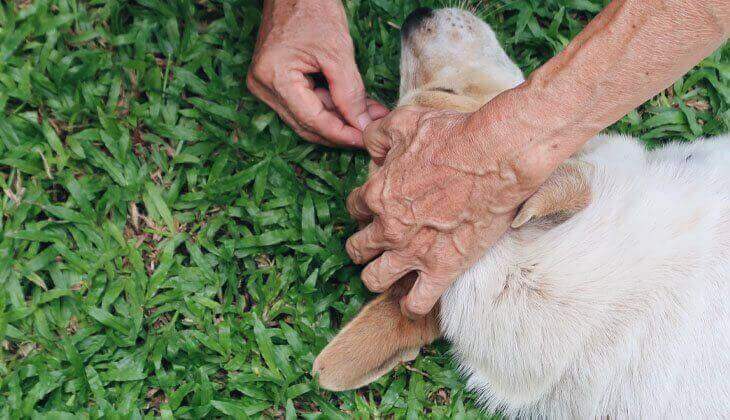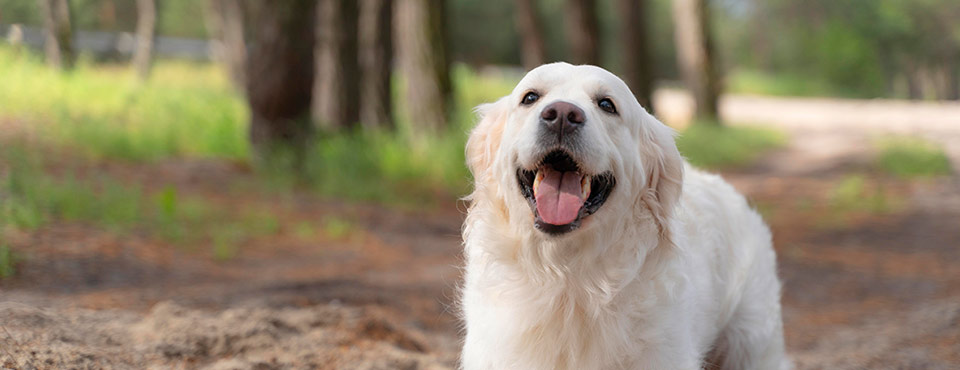How To Deal With Ticks On A Dog
HEALTH & PROTECTION
25 May, 2019
READ 6 minutes

TICKS ON DOGS
Your dog is an extension of your family, so naturally, safety comes first. Ticks are a common health concern, especially with the global increase of tick-borne diseases.
You may not realise it, but ticks pose a considerable threat to your dog regardless of whether or not your dog is outdoors.
What’s worse? If untreated, ticks can make their way into your home, by latching on to your dog, you and your family. Knowing how to spot these parasites, where they flourish, and how to remove and prevent them is crucial to help keep your dog healthy
HOW DO DOGS GET TICKS?
Ticks can be found in grass, shrubs, and bushes, as well as buildings, kennels and shelters. They just sit and wait to catch a ride on a warm, passing body. Anytime your dog goes out into the world, even for a short walk, a play date at the local park, a trip to the groomer, a ride in the car, a weekend at the kennel, he or she is being exposed to the chance these parasites will hop aboard. Before the ticks bite, they spit out a local anesthetic that numbs the area. Once they latch on, they can stay and may secretly feed on the victim’s blood for up to five days.
WHEN DO TICKS THRIVE?
Ticks can be found all year, although they are most numerous and active during the spring and autumn months. Climate and lifestyle changes help ticks expand their territories and spread to new areas. Outdoor parasites can be active even in cold months. Because of the long tick season, there is potentially a year-round risk for parasites, and this increases the risk of your dog catching a disease transmitted by these pests.
WHY ARE TICKS A DANGER TO OUR DOGS?
Ticks can transmit serious diseases, tick bite fever (Ehrlichiosis) and Biliary (Babesiosis). The blood feeding activities of ticks can even cause anemia.
HOW DO I KNOW IF MY DOG HAS TICKS?
Ticks attach to their host and take a blood meal for hours and sometimes days so you may find an attached tick with its mouth burrowed into your dog’s skin. These can look like small to medium sized lumps on the surface, and the presence of 6 to 8 short legs on the lump is a clear indication of a tick. Juvenile ticks can be very tiny and hard to see.

HOW CAN I REDUCE THE RISK OF TICKS?
Ticks may latch onto you or your dog no matter how careful you are, because they are exceptionally well adapted at hiding in the environment, detecting approaching hosts and hitching a ride. Reduce the risk of tick attacks by avoiding areas with long grass, the edge of the forest, and shrubs—of course, these are areas dogs love to explore.
If there are ticks around your home, create barriers by cutting bands of vegetation between your lawn and surrounding natural areas, or use mulch and wood chips a few feet wide to create vegetation-free bands.
Always check your dog and yourself for ticks when you return from areas where you may have been exposed, and dress appropriately, wearing long pants and boots if possible. Light colored clothing can make it easier for you to see crawling ticks.
HOW DO I CHECK FOR TICKS ON A DOG?
When examining your dog, it’s important to remember that ticks can be as small as pencil points or as large as beans when engorged with blood. Ticks like to hide in warm, protected spots so carefully look under your dog’s front legs, inside the ears, between the toes, and around the chin and face. If you find a tick crawling on the coat, that is not attached, then brush or pick it off and safely dispose of it. If a tick is attached to your dog’s skin, it needs to be pulled off.

HOW DO I CHECK FOR TICKS ON A DOG?
It is important to remove ticks correctly. There are adapted tweezers and tick lifting devices that can be very helpful. You may want to ask your veterinarian to help you, especially if you find multiple ticks on your dog.
If you plan to remove the tick yourself, use tweezers and try to lift the tick out in one piece. If the tick breaks apart while you are removing it, then remove as much of it as you can from your dog’s skin. Use the tweezers to draw out the remaining body and legs.
Feeding ticks insert their mouthparts into the skin, and removal of these along with the rest of the tick will help the attachment site heal quickly. After removing the tick, keep it sealed tightly in a jar, with clear alcohol or clear hand disinfectant and take it to your vet to ask whether or not your dog was exposed to any potential diseases.
Remaining calm and positive is important. This, in conjunction with a little TLC, will have your dog feeling good as new before you know it!
Ticks may seem incredibly disgusting, sneaky and resilient,
but they are not invincible.
Proactively manage and protect your dog from ticks by treating with Bravecto® which provides 12 weeks of nose to toes tick and flea protection in a single tasty chew or 4 months protection against ticks and 6 months protection against fleas with Bravecto Spot-On for Dogs – that’s longer than any other spot-on or chewable tick and flea treatment. Bravecto® starts working within 2 hours and 100 % of ticks are killed within 12 hours and, it doesn’t wash off during grooming or swimming, giving you the peace of mind that ticks that are gone, stay gone!
To learn more about Bravecto® and how it works, download our brochure for all the information you need at www.bravecto.co.za
Bravecto® is available from your vet and vet stores.
RELATED POSTS
-

Learn about canine babesiosis, a tick-borne disease that affects dogs worldwide. Discover its symptoms, treatments, and how to prevent it.
-

Explore how diabetes impacts cats, its signs, risk factors, and effective management through medication and diet for a healthier feline life.
-

Diabetes affects an estimated 1 in 300 dogs, diabetes is more common in middle-aged and older dogs (4-14 years of age), it can be diagnosed in dogs of any age, including young dogs. Read more.
-

Ever wonder how your dog experiences the world? Why he or she sniffs everything, everywhere? Read more and find out








